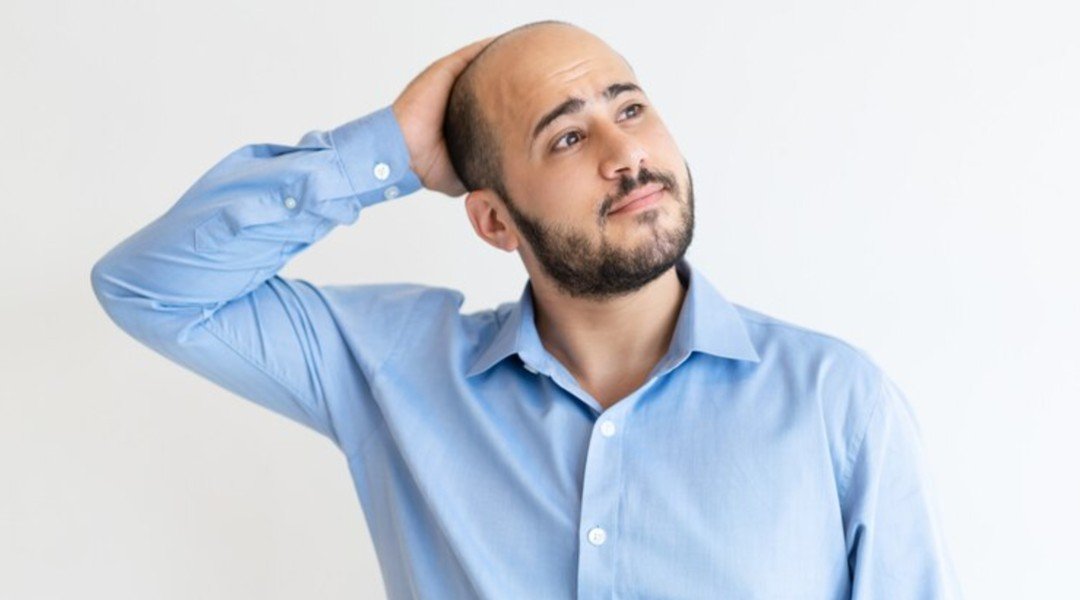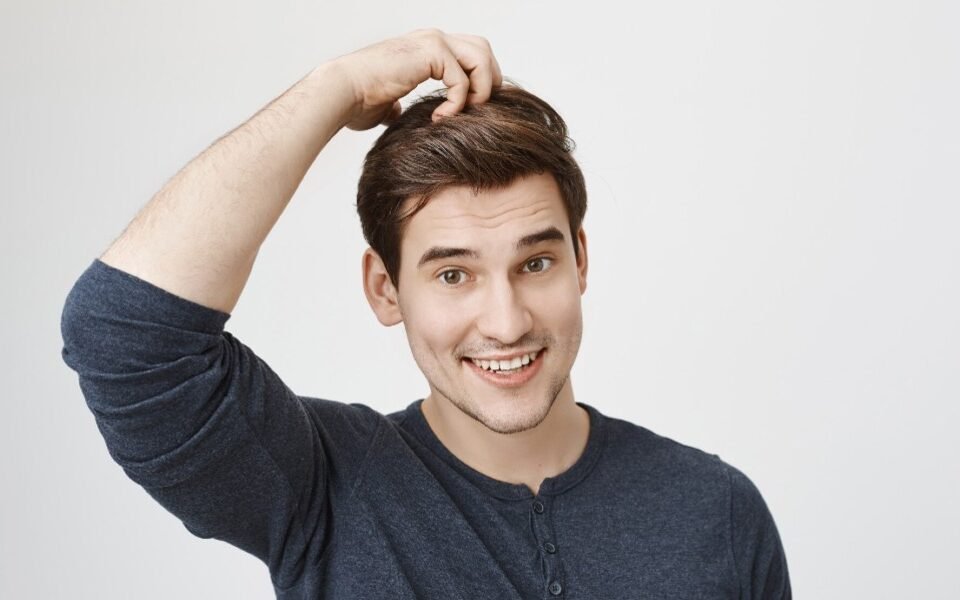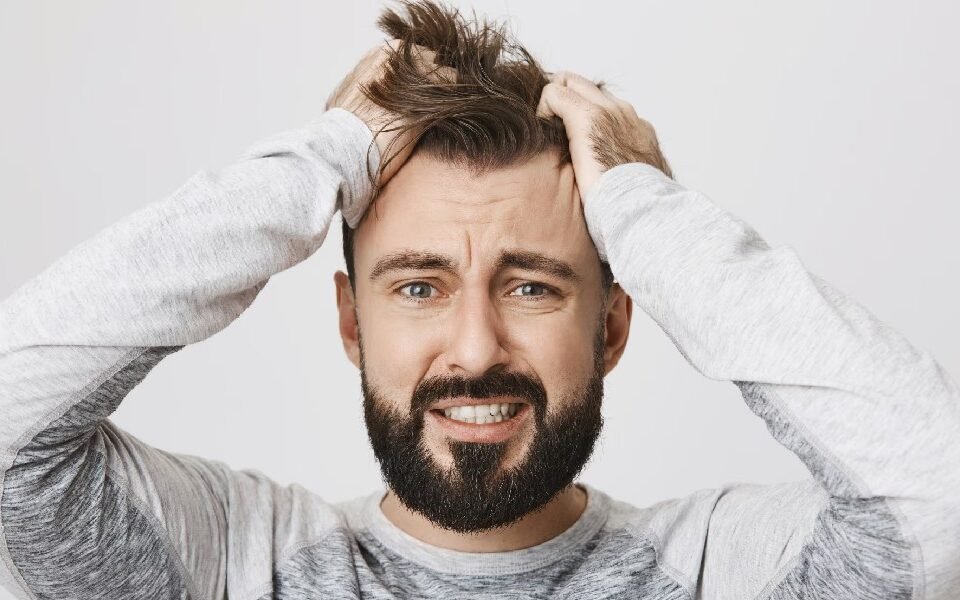Male Pattern Baldness Decoded: Causes, Solutions, and Confidence Boosts

Winter Face Cream: Your Skin’s Cozy Blanket Against the Cold
January 14, 2025
Mastering Gentle Skincare: Sensitive Skin Care Tips You Can Trust
January 28, 2025Waking up on one fine morning only to spot a receding hairline or a thinning patch on the crown is definitely not the best way to start your day. In fact, several men these days experience male-pattern baldness. But the truth is that it doesn’t mean the end of your life.
Hair loss may sometimes feel like a personal loss. But trust us, it is one of the most common forms of hair loss men face. In this article, we have addressed male pattern baldness, its symptoms, reasons for male pattern baldness, and ways to control it. Read this article until the end to discover.
What is Male Pattern Baldness?
Male pattern baldness, also known as Androgenic Alopecia, is a type of permanent hair loss that mainly affects male members of our family. It leads to permanent hair loss from the scalp. Some other signs of Androgenic Alopecia are thinning hair and a receding hairline.
As per the Hamilton-Norwood scale, there are seven distinct stages of Androgenic Alopecia:
- Stage 1: This is an early stage of male pattern baldness, during which there is minimal hair loss or hairline recession.
- Stage 2: The quantity of hair loss in this stage slightly increases near the skin between the ears and forehead.
- Stage 3: In this stage, one might experience a deep hairline recession around the ears and forehead. At this stage, one may be able to identify their hairline in either an ‘M’ or a ‘U’ shape.
- Stage 4: In this stage, one may experience a deep hairline recession and hair loss at the crown part.
- Stage 5: In this stage, the hairline recession connects to the bald spot on the crown area.
- Stage 6: In this stage, either the hair between your crown area and hairline begins to get thin or disappears completely.
- Stage 7: This stage is characterized by no hair on top of the hair and a thin band of hair around the sides of your head.
What are the Symptoms and Causes of Androgenic Alopecia?
The following are the symptoms of male pattern baldness or Androgenic Alopecia:
- Hair loss or hair thinning on the crown area.
- Hair loss or thinning near the temples (the area between ears and forehead).
- A receding hairline or a hairline that seems to push further back towards the crown area.
Many people start noticing the early signs or symptoms of Androgenic Alopecia by their 30s. Some may even start experiencing it in their late teenage years or in their early 20s.
Now that we are aware of the symptoms, let us understand what male pattern baldness causes are. The following are the factors that are responsible for Androgenic Alopecia:
- Genetics: The major cause behind Androgenic Alopecia is genetics. It is an inherited condition that gets transferred through genes. If anyone in your family has ever experienced Androgenic Alopecia, then you are most likely to experience it as well.
- Hormones: Another major cause behind Androgenic Alopecia is your hormones. Medical professionals believe that there could be a link between Dihydrotestosterone (DTH) and the shrinking hair follicles. DTH is a type of androgen. Androgens are a group of hormones that allow people to enter puberty and enable physical development.
- Lifestyle: Factors like chronic stress, poor nutrition, and smoking can speed up the process of Androgenic Alopecia.
- Age: Age is also a factor that often contributes to Androgenic Alopecia. Research says that the chances of developing Androgenic Alopecia increase with age.
How Does Androgenic Alopecia Impact Men?
Although male baldness does not cause physical pain, it may bother a person psychologically. Here’s how male baldness impacts men:
- Emotional and Psychological Impact: Androgenic Alopecia may lead to low self-esteem in men. Often, men are seen to suffer from anxiety and depression caused by low self-esteem.
- Social Impact: Men with Androgenic Alopecia are often perceived as aged people or someone with reduced virility. This stereotype can be challenging to deal with.
- Professional Impact: A person experiencing Androgenic Alopecia may feel less confident in a professional setup, especially in industries where appearance plays a vital role.
How to Stop Male Pattern Baldness
Medical science and healthcare practitioners have not yet uncovered the secret to stopping male pattern baldness. However, you may delay the process or control it by taking the following measures:
- Healthy Eating Habits: Make sure to consume a healthy diet, having a balanced portion of nutrients. Focus on consuming extra proteins as they promote hair growth.
- Intake Vitamins: Make sure your diet is rich in Vitamins and minerals. Vitamins A, B, C, D, E, zinc, and iron will help you to maintain healthy hair and promote hair growth.
- Find Ways to Manage Stress: Stress management is mandatory if you want to control or slow down the process of Androgenic Alopecia. Find ways to articulate your stress in a productive way. Following hobbies and involving yourself in workout sessions may help you to manage stress effectively.
Read also: Say Goodbye to Thinning Hair: The Best Hair Growth Serum





